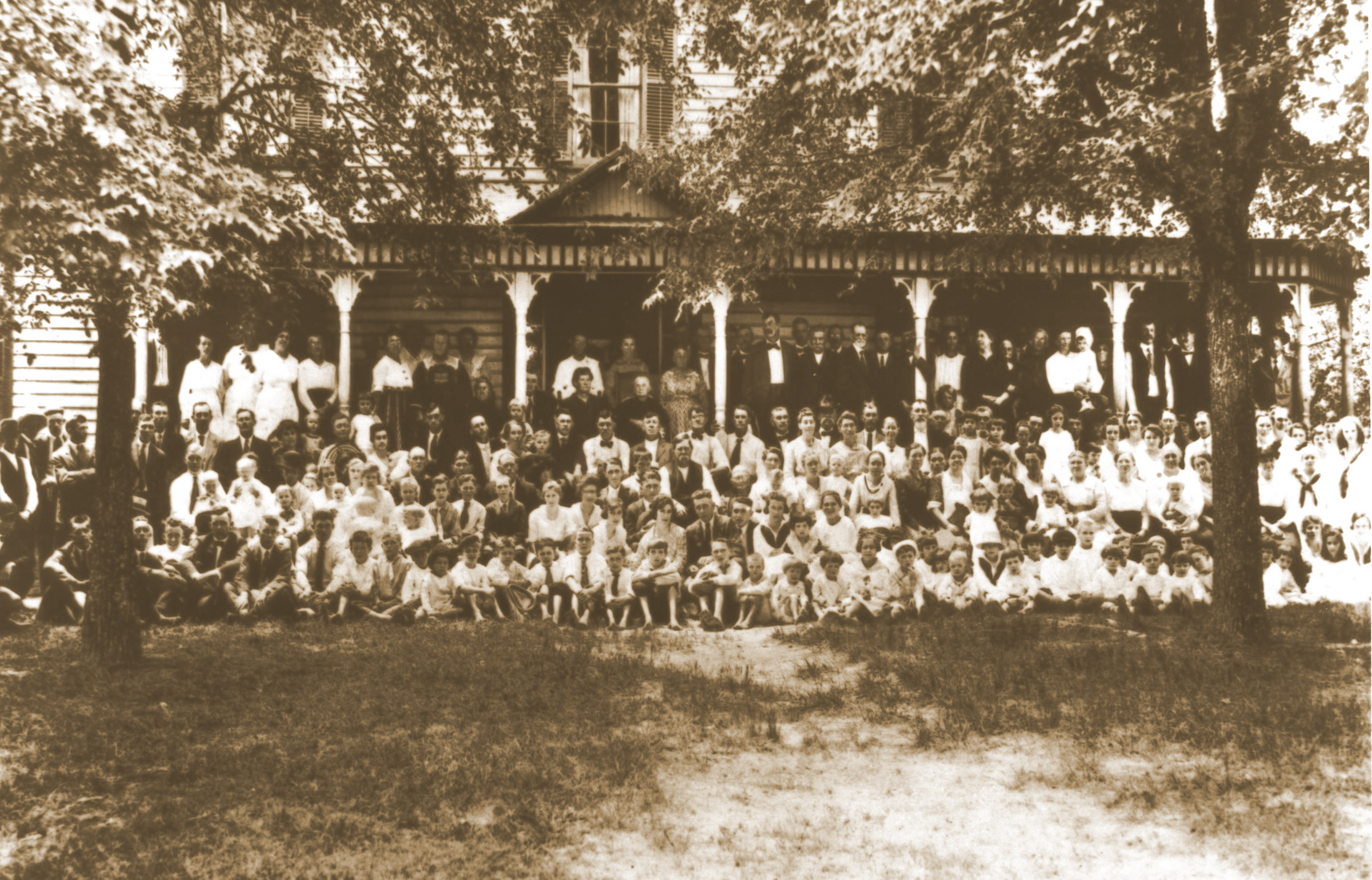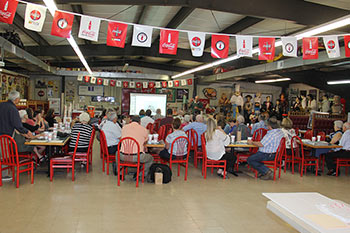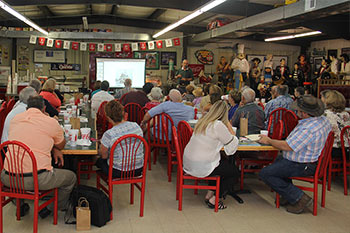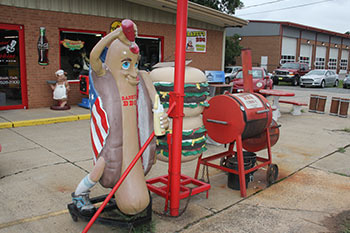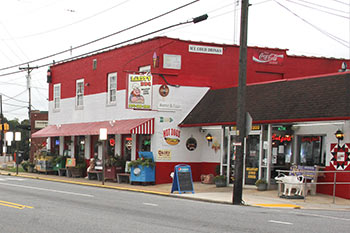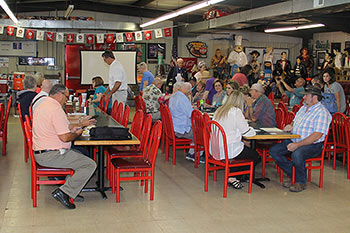CHAPTER 18
John Marries the Widow on the Neighboring Farm
On 12 May 1785 in Rowan County, John married his neighbor Elizabeth Reigel Sossaman, widow of Henry Sossaman who had died in 1782. Sossaman had owned a mill nearby. The bondsman was John Josey, likely a neighbor.
Elizabeth and Henry had had nine children – Henry, John, Daniel, Jacob, Catherine, Sophie, Gertrude, Elizabeth, and Mary. (Interestingly, John and Elizabeth's blended family of nineteen children included five children from each family who had the same names!) John, Elizabeth, and the children still living at home were counted in both the 1790 Mecklenburg County and the 1800 Cabarrus County U.S. Censuses, most likely at John's original home place.
This blended family shifted its religious sentiments toward the Lutheran Church. About the time that the Lower Stone Sanctuary was being erected, the Lippard and Sossaman children began to appear in the records of Organ Church. One of the first baptisms of 1794, when the sanctuary was just opened, was for a child of Daniel Sossoman. "John Lippert" was the sponsor. On July 28, 1795, the infant "John Lippert" son of "John Lippert", sponsored by "John Lippert Senior" was baptized by the Reverend Johannes Storch. At that time—as will be discussed in the next part of the family narrative—John Lippard, the son of John, is known to be living at what becomes the family homestead in Iredell County. But, the family returned to Rowan County to have the baptism performed. One reason might have been a death in the family: Wilhelm's widow Catherina had died just days before. The affiliation with Organ continued. For example, Christian's son John was sponsored by John Senior in 1796.v
Why the Lippards made this religious shift is not certain. There was controversy back at the Reformed Church, over the nature of "grace" and its availability to all. As a result, the construction project in 1795 was halted when the walls were erected. Dissent rent the congregation, mostly over the egalitarian messages being preached by the pastor, the Reverend Samuel Weyberg, originally from Philadelphia, whose father had been associated with the political leanings of Benjamin Franklin. A counter faction, led by George Henry Barger, the most prominent German in Rowan County, refused to provide their tithes to complete the project, so the new sanctuary languished unfinished into the 1800s, until some of the Weyberg faction migrated to Missouri. Exactly which side the Lippards were in the dispute is hinted at by the fact that they shifted their baptisms to Organ. Significantly, Barger was the sponsor when Henry "Lippert" had his daughter Catherine christened. Christian Lippard had Elizabeth baptized the same Sunday.
Farming, and the ability of the family to remain as prosperous as possible, was on John's mind as much as faith. For a number of years, the blended family had use of the old Wilhelm property, where the widow lived until her death. As executor—and the sole heir—John acquired the land left him by his father. He did not, however, keep it for himself or his children. On 28 November 1792, John and Elizabeth Lippard (his second wife) sold to George Smith ("late of the Province of Virginia") 188 acres on the waters of Dutch Buffalo Creek in the newly created Cabarrus County (but described in the records as being in Mecklenburg where it was earlier). The farm had been originally granted by Governor Dobbs to Wilhelm on 24 June 1762 (even though it is obvious that Wilhelm and perhaps John had been working it since 1755). For Wilhelm's farm, George Smith paid John and Elizabeth "five hundred Spanish milled dollars, each of them weighing seventeen penny weight six grain clear coined silver whereof ninety-five pounds or two hundred and thirty-seven dollars and half dollars."
This is most curious, given that just a year or so later, the two oldest sons William and John, show up in the public records of Iredell County. Perhaps those finely milled Spanish dollars were used in part to help "set up" the sons on fresher land to the west. This is doubly curious given that Wilhelm's tract included wide bottom lands. Still, the decision was made to disperse the family rather than hold it together in one small place.
On 9 October 1795, John purchased 24 acres on "Shaney's Wolf's" Creek in Cabarrus County from neighbor Michael Fesperman. This was part of a 77 acre tract granted to Fesperman by a state grant on 9 July 1794. Shaney Wolf (also known as Jenny Wolf) Creek has its headwaters near the Rowan County line, runs right through John's farm on its upper waters, and flows into Dutch Buffalo Creek, about a mile east of Wilhelm's house site. Most probably it derives its name from John Lippard's neighbor John Barnot Shiarewolf, one of the earliest German settlers in this area.
On 10 October 1795, during the same meeting of the Cabarrus County quarterly court, John purchased 38 acres on Shaney Wolf's Creek from Jacob Bence. This was part of a 78 acre tract granted to Bence on 9 July 1794.
Another clue to John being one of the prominent people of the Dutch Side was his slave holding. The vast majority of Germans did not own slaves in the 1700s. In 1790, the year the first federal census was taken, only seven of 83 Germans living in John's tax district owned even one slave. John owned five, which put him second to Paul Barringer, with 13.
Thus in his life time John made numerous land purchases and sales, still apparently holding at least 406 acres at his death, probably about 1804. Elizabeth, who had been born in 1738 in Maxatawney, Berks County, Pennsylvania, outlived John by approximately twenty years, dying most probably in 1824. In her will, dated 15 March 1824, she mentions only her children by her first marriage to Henry "Sassaman".
